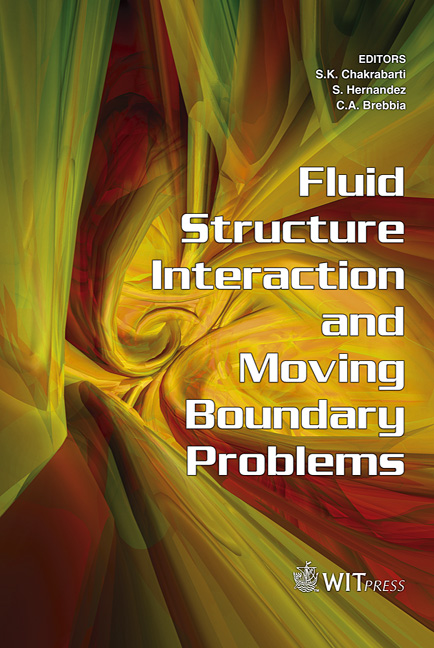Advances In FSI Using Body-fitted Unstructured Grids
Price
Free (open access)
Transaction
Volume
84
Pages
9
Published
2005
Size
1,236 kb
Paper DOI
10.2495/FSI050031
Copyright
WIT Press
Author(s)
R. L¨ohner, B. H¨ubner & J. R. Cebral
Abstract
Several algorithms for the loose coupling of fluid and structural dynamics codes are described. The first class of algorithms treats the displacement of the surface of structure that is in contact with the fluid. It is shown that a straightforward treatment of the displacements for arbitrary choice of timesteps can lead to instabilities. For optimal stability, at each timestep the ending time of the fluid should be just beyond the ending time of the structure. The second class of algorithms treats the movement of the flow mesh in an ALE setting. The use of a projective prediction of mesh velocities, as well as linelet preconditioning for the resulting PCG system, can significantly reduce the effort required. Examples are included that show the effectiveness of the proposed procedures. 1 Introduction While CFD solvers based on adaptive cartesian or unstructured grids are commonly used for complex Fluid-Structure Interaction (FSI) simulations, for applications that require the proper resolution of boundary layers the moving, body-fitted mesh approach with arbitrary Lagrangean–Eulerian (ALE) formulation remains the only viable option to date. The need to extend the range of applicability of this type of approach to long-term FSI runs, such as bridges, chimneys and offshore platforms, has led to a series of algorithmic improvements which are the subject of this paper. In particular, the following subjects will be treated: - synchronization of times between loosely coupled CFD and CSD solvers in order to minimize grid distortion; and - projective prediction to accelerate the convergence of the PCG solver of the mesh velocities.
Keywords





